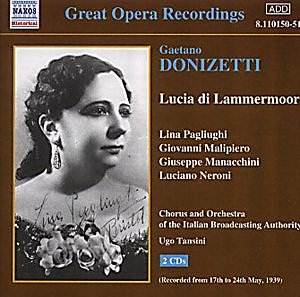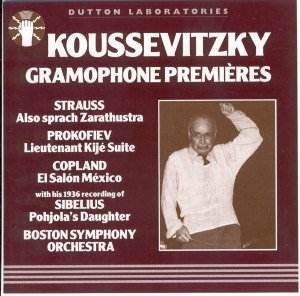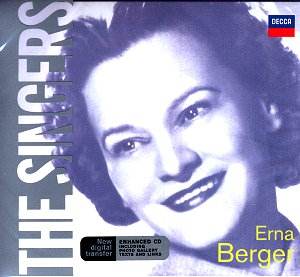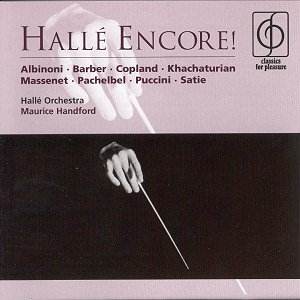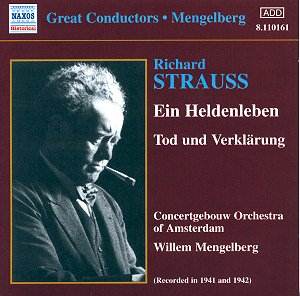 Composer: Richard Strauss
Composer: Richard Strauss
Works: Ein Heldenleben, Tod und Verklarung
Performers: Concertgebouw Orchestra, Willem Mengelberg, conductor
Recording: Concertgebouw, 1941 (Ein Heldenleben) and 1942 (Tod und Verklarung)
Label: NAXOS HISTORICAL 8.110161
Richard Strauss, a towering figure of late Romanticism, crafted symphonic poems that encapsulate both personal introspection and expansive orchestral color. “Ein Heldenleben” (A Hero’s Life) and “Tod und Verklarung” (Death and Transfiguration) are emblematic of his stylistic evolution, illustrating the duality of human experience through lush orchestration and complex emotional landscapes. The historical context of these works lies in Strauss’s own life, reflecting his artistic struggles and triumphs during a tumultuous period in European history. This Naxos Historical release, featuring the renowned Concertgebouw Orchestra under the baton of Willem Mengelberg, provides a vital glimpse into the interpretive practices of the early 20th century, a time when the boundaries of orchestral performance were being pushed toward unprecedented heights.
Mengelberg’s interpretation is characterized by a bold, almost theatrical approach to Strauss’s music, marked by a sweeping grandeur and a willingness to bend tempo and dynamics to enhance the narrative drive. In “Ein Heldenleben,” the varying degrees of rubato create a sense of spontaneity, allowing the orchestra to breathe with the music. The lush strings evoke a deeply human warmth, particularly in the love theme, where Mengelberg’s nuanced dynamics illuminate the emotional depth. The brass, often a focal point in Strauss’s orchestration, is handled with a blend of assertiveness and finesse, particularly during the climactic moments that depict the hero’s triumphs and struggles.
The recording, remastered by Mark Obert-Thorn, presents an impressive restoration of the original Telefunken shellac recordings. While the inherent limitations of the medium—previously marred by surface noise—are still perceptible, the clarity achieved in this reissue is commendable. The orchestral balance is well preserved, allowing the listener to appreciate the intricate interplay between the sections. The background hiss, now uniform and relatively low, does not detract from the overall listening experience, but rather serves as a reminder of the historical context of these performances. In “Tod und Verklarung,” the ethereal quality of the woodwinds, especially during the transfiguration section, reveals a delicate interplay that showcases the orchestra’s virtuosic capabilities under Mengelberg’s direction.
An assessment of this recording inevitably invites comparisons with other notable interpretations, particularly those by conductors like Herbert von Karajan and Rudolf Kempe, who are often lauded for their precision and clarity in Strauss’s works. However, Mengelberg’s distinctive approach—marked by interpretative freedom and emotional immediacy—offers a refreshing contrast. His willingness to embrace a more subjective reading of the score may resonate differently with listeners, especially those accustomed to the more regimented interpretations of later conductors. The result is a performance that feels alive, imbued with a sense of spontaneity that captures the essence of Strauss’s vision.
This release is not merely a historical artifact; it is a vibrant testament to the artistry of a conductor who understood the heart of Strauss’s music. Mengelberg’s interpretations, characterized by their warmth and humanity, remain compelling even against the backdrop of modern performances. This recording stands as an essential addition to the collection of any Strauss enthusiast, offering both a window into the past and a profound listening experience that continues to resonate today.
